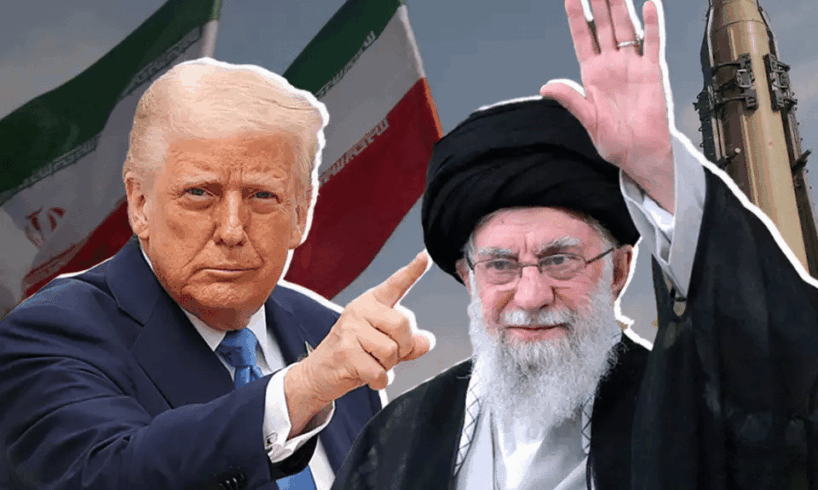
Alongside examining the viability of Donald Trump’s plan to end the war in Gaza, it is worth considering its implications for Iran and, accordingly, Tehran’s expected response if the plan is implemented. On the surface, the proposal appears to improve Israel’s strategic position: it is supposed to secure the release of all hostages from Hamas, dismantle the terrorist organization’s weapons infrastructure, and seemingly eliminate the need for Israel to occupy the Strip.
Given Iran’s conspiratorial mindset and Khamenei’s deep suspicion of US actions, Tehran is likely to view the plan as a move aimed squarely at undermining the regime. The leadership may suspect that Trump’s plan is designed to complete the weakening of another arm of Iran’s regional proxy network—Hamas. This would add to Hezbollah’s current difficulties in Lebanon, the decline of Shiite militias in Iraq, and the collapse of the Assad regime in Syria. In Tehran’s eyes, all this points toward the main goal of Prime Minister Benjamin Netanyahu and President Trump: toppling the Iranian regime.
A poster of Supreme Leader Ayatollah Ali Khamenei in Tehran. Photo: EPA
Iran’s state media has already framed Trump’s proposal as an “imperialist plan designed to perpetuate the occupation of Palestine.” The plan threatens Iran because it explicitly weakens Hamas and its grip on Gaza. Should Hamas accept, control of the Strip would pass to a technocratic, apolitical Palestinian committee responsible for day-to-day governance under the oversight of an international transitional body—”the Peace Council”—led by Trump and joined by figures such as former British Prime Minister Tony Blair.
The positive reception of the plan by Arab states and Israel undermines the regional policy Iran has tried to lead since Israel’s attack in Qatar. At the Islamic summit in Doha, Tehran pushed for a unified front against Israel, urging not only condemnations but also harsh action, including economic and diplomatic boycotts. Trump’s plan flips this strategy on its head. Now Israel and key Arab states appear to be aligned, not opposed. Moreover, if Hamas rejects the plan, as it is expected to, the tacit approval from the US and indirect backing from Arab states for Israel to occupy Gaza runs counter to Iran’s regional strategy.
How might Iran respond?
Several factors fuel Tehran’s opposition: Khamenei’s distrust of the Trump administration, Iran’s desire to block a US-led regional order, and its aim to leverage the Swords of Iron War, and the Israeli attack in Qatar in particular, to shape a pro-Iranian regional order. Tehran also fears that Israel seeks to renew direct confrontation with Iran, thereby pushing Arab states to avoid any cooperation with Jerusalem in such a scenario.
From Iran’s perspective, Trump’s plan could pose dangerous consequences for its national security. Tehran will likely attempt to pressure Arab states diplomatically to oppose the plan. It will also seek consultations with Hamas on how to exploit it, using the proposal to stall Israeli military action in Gaza and to prevent even temporary Palestinian displacement, while simultaneously blaming Israel for obstructing implementation or pushing for Hamas allies to infiltrate the proposed technocratic administration.
The requirement that all hostages be released before Israeli withdrawal prevents Iran and Hamas from pursuing a deception strategy, extracting concessions from Israel, such as avoiding a full occupation of Gaza, without Hamas delivering on its side. Tehran and Hamas are also expected to seek Qatari mediation for support in navigating the bind the Trump plan has created. Even if Hamas ultimately rejects the proposal, Iran will likely try to reassure its leaders of the necessity of resistance, offsetting Hamas’ concerns about the strong backing Arab states have shown for the plan.
Ultimately, Trump’s initiative appears to undercut Hamas’ most valuable leverage: it demands the release of hostages upfront while forcing disarmament. It also contradicts Hamas’ strategy of leveraging the October 7 attack as a long-term asset, even at the cost of losing control of Gaza. Despite mounting pressure from Arab leaders, Hamas is expected to reject the plan or, at the very least, turn to Qatar to negotiate changes that would hollow it out.
A ballistic missile launched from Iranian territory. Photo: AP
Israel, meanwhile, is already benefiting from the proposal. Even before implementation, the plan has thwarted Iran’s attempt to build a unified Islamic front against Israel. Still, it risks stoking Iranian fears that Israel and the US are preparing for war, this time aimed at a regime change. The danger of Iranian miscalculation, including the possibility of a sudden strike against Israel, is a scenario both Washington and Jerusalem must now take seriously.
Senior Iranian officials such as Yahya Rahim Safavi, Khamenei’s senior security adviser, have already called in mid-August for a surprise attack on Israel. Those calls could now gain momentum, particularly after the activation of the “snapback” mechanism, which increases the chances of Iranian miscalculation.





